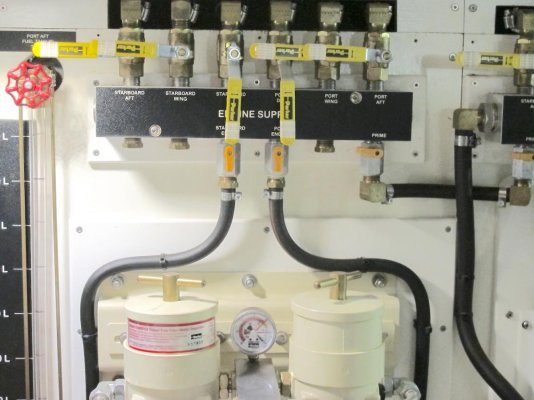cappy208
Guru
You must ensure the valve (and whatever else you install) has protection against being stepped on, dropped on or otherwise smacked. Because a cracked nipple, elbo or fitting can allow an unintended fuel spill. It's bad enough with the spill. But even worse if you were out in heavy weather and something fell on it and you lost the fuel underway.




